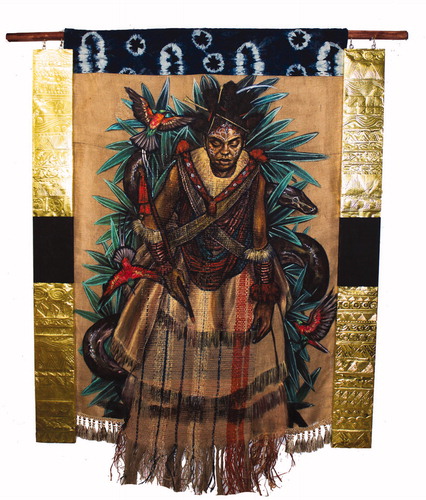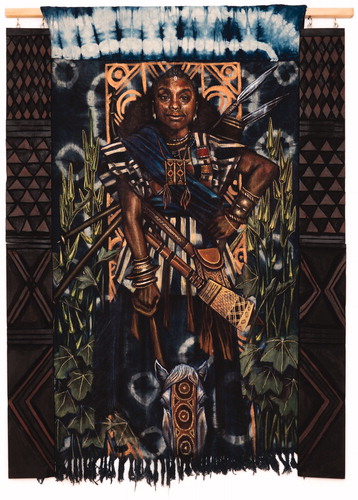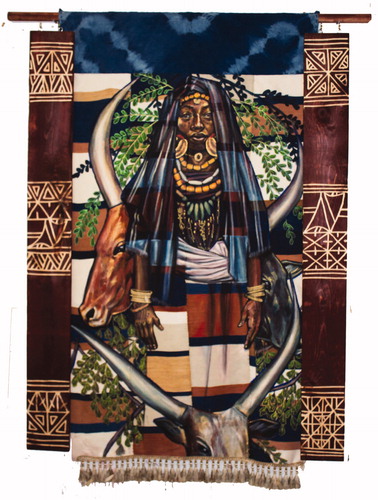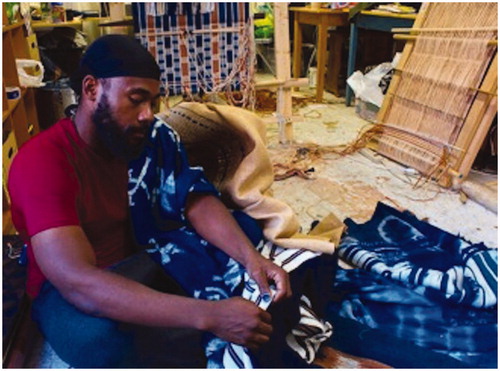Figures & data
Figure 1. Ruth Ayuso as Nnimm Woman Descending, 2018. Acrylic, brass, and natural dyes and pigments on wood and hand-woven cloth. 72 inches × 72 inches. A depiction of Boston high school student Ruth Ayuso as the founder of Nnimm women’s society of the Ejagham people (Southeast Nigeria).

Figure 2. Gianna Watson as Yennenga, 2018. Acrylic and natural dyes and pigments on wood and hand-woven cloth. 60 inches × 72 inches. A depiction of Boston high school student Gianna Watson as Yennenga, founder of the Mossi Empire (Burkina Faso, West Africa).

Figure 3. Salamata Barry as Bajemongo, 2018. Acrylic and natural dyes and pigments on wood and hand-dyed cloth. 60 inches × 72 inches. A depiction of Boston high school student Salamata Barry as the matriarch of the Fulani people (concentrated principally in Nigeria, Mali, Senegal, Niger, Cameroon, and Guinea).

Figure 4. Stephen Hamilton working with fiber and textiles in his studio. “Each textile is made on the Nigerian upright loom using patterns and techniques employed by Yoruba, Igbo, Edo, Nupe, Tiv, and Ebira weavers. All yarn is hand-dyed using only natural dyes” (personal communication, June 25, 2019).

